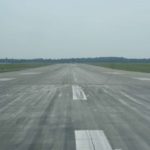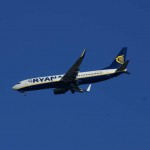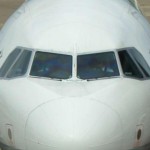Boeing has begun work on the first Boeing Business Jet 3 (BBJ 3).
Geneva – The BBJ 3 is a new, larger business jet based on the Boeing Next-Generation 737-900ER (extended range), which entered commercial service and was certified by the U.S. Federal Aviation Administration in April 2007. Certification by the European Aviation Safety Agency occurred in April 2008.
The BBJ 3 was launched in October 2006, and will enter service in 2009 with an unidentified customer. The jet is 138 feet, 2 inches long (42.1 meters) and has 1,120 square feet (104 square meters) of floor space.
Boeing Commercial Airplanes provides airplanes to Boeing Business Jets. Boeing Business Jets delivers them to customers in „green“ configuration (no paint or interior) and arranges for the installation of a long-range, auxiliary fuel system. The BBJ is then sent to a completion center of the customer’s choosing for interior completion.
The same CFM56-7 engines used on Next-Generation 737 commercial airplanes power the BBJ. Owners benefit from the recent addition of CFM’s Tech Insertion program, which lowers fuel burn and reduces NOx emissions to meet 2008 CAEP 6 regulations.
All BBJs are equipped with Aviation Partners Boeing Blended Winglets. The winglets reduce community noise by 0.5 to 2.1 EPNdb on takeoff with a slight improvement on approach; lower emissions through lower cruise thrust; lower operating costs by reducing block fuel burn 5.8 percent on a 5,800-nautical-mile trip (approximately 540 U.S. gallons); reduce engine maintenance costs and increase the airplane’s range up to 270 nautical miles with a typical eight-passenger payload.
The BBJ program focuses on features that help owners fly safely, efficiently, reliably and comfortably. Boeing currently is delivering Lower Cabin Altitude and Future Air Navigation System. Lower Cabin Altitude allows the cabin pressurization control system to regulate the cabin environment to equal a maximum cabin altitude of 6,500 feet so that passengers travel in greater comfort. Future Air Navigation System streamlines communication between flight crews and air-traffic controllers. FANS adds another layer of safety and efficiency to the global air transportation system, and allows BBJ owners to take more direct routes, shortening flight times and saving fuel.
Boeing recently announced that weight-saving, emissions-reducing carbon brakes soon will be available both in production and retrofit for all BBJ operators. Owners opting for carbon brakes will realize a 320 kg (700 lb.) weight savings versus the current-technology steel brakes. Also in work is the Enhanced Vision System, which presents an infrared image of the external environment on the head-up and head-down displays. The system enhances pilot situational awareness of terrain and airport environments in low visibility situations. EVS is a tool of particular value to BBJ owners who fly into airports that don’t support autoland operations.
The BBJ, BBJ 2 and BBJ 3 provide unsurpassed levels of space, comfort and utility and are backed by a top-notch product-support program with dedicated field service representatives around the world.
In addition to the eight BBJ 3 orders, Boeing Business Jets has secured a total of 177 orders for BBJs and wide-body VIP versions of the 747, 767, 777 and 787. One hundred four BBJ and VIP airplanes are currently in service around the world, in addition to approximately 30 wide-body Boeing jets that are in service to governments and heads of state, sold through other means.
Photo: Boeing






